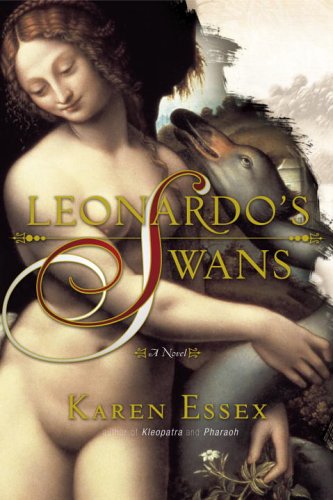Leonardo’s Swans
Leonardo da Vinci has become quite popular these days, as has the historical novel featuring an intrepid woman ahead of her time, with an abiding interest in Art. Doubleday is clearly capitalizing on these facts in marketing Karen Essex’s latest novel. The strategy will undoubtedly sell books, but it does not begin to do justice to Essex’s haunting account of the sibling rivalry between two princesses of the Renaissance—Isabella d’Este, Duchess of Mantua, and her younger sister, Beatrice, wife of Il Moro, Duke of Milan.
Told from the eyes of both sisters, the novel starts with deceptive superficiality, as the elegantly adept Isabella engages in a competitive battle for supremacy with the wilder and less intellectually accomplished Beatrice. Through a mere matter of poor timing, Beatrice has wed a more powerful and intellectually stimulating man—an event that perplexes Isabella, for how can the vagaries of fortune have allowed someone of Beatrice’s pedestrian aspirations to seize the prize that is Milan? Moreover, Milan commands the genius of Leonardo da Vinci, acclaimed court painter and engineer to Il Moro. Determined to outshine her sister, Isabella sets herself to be immortalized by Leonardo’s brush, while Beatrice steers a resolute course to wealth and power. But larger political concerns soon overwhelm the oblivious self-aggrandizement and foibles of these Renaissance sisters. Both are tested to their limits and beyond, compelled to discover an inner strength that will ultimately exalt one and destroy the other.
Threaded within their story is Leonardo’s relentless pursuit for knowledge and reverence for the fragility of life, which elevates him from the ambitions of those he must serve. Despite a sometimes distracting mix of past and present tense, this is a rare novel that captures an era of unparalleled personality, the like of which shall never be seen again.










